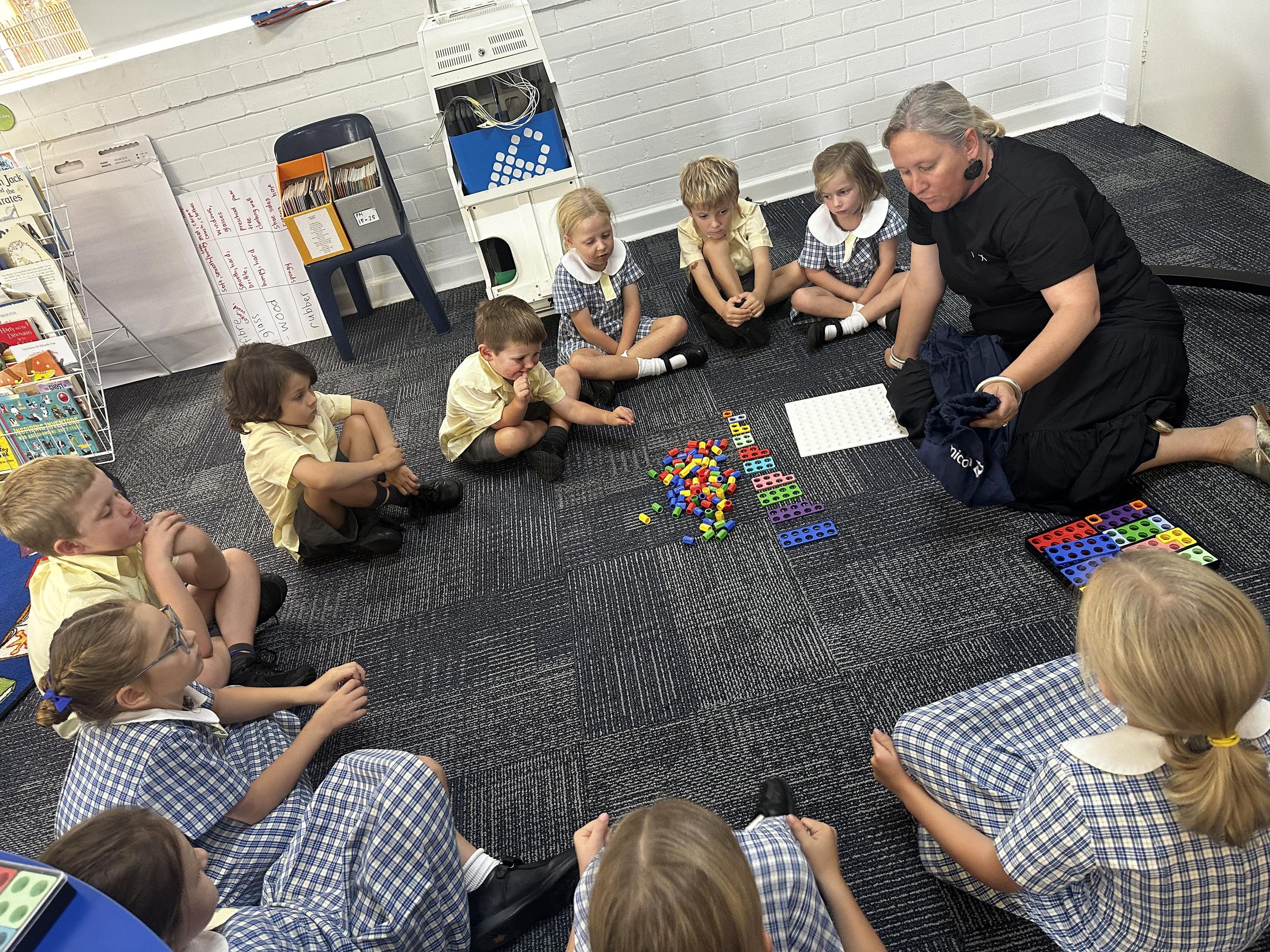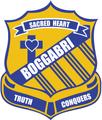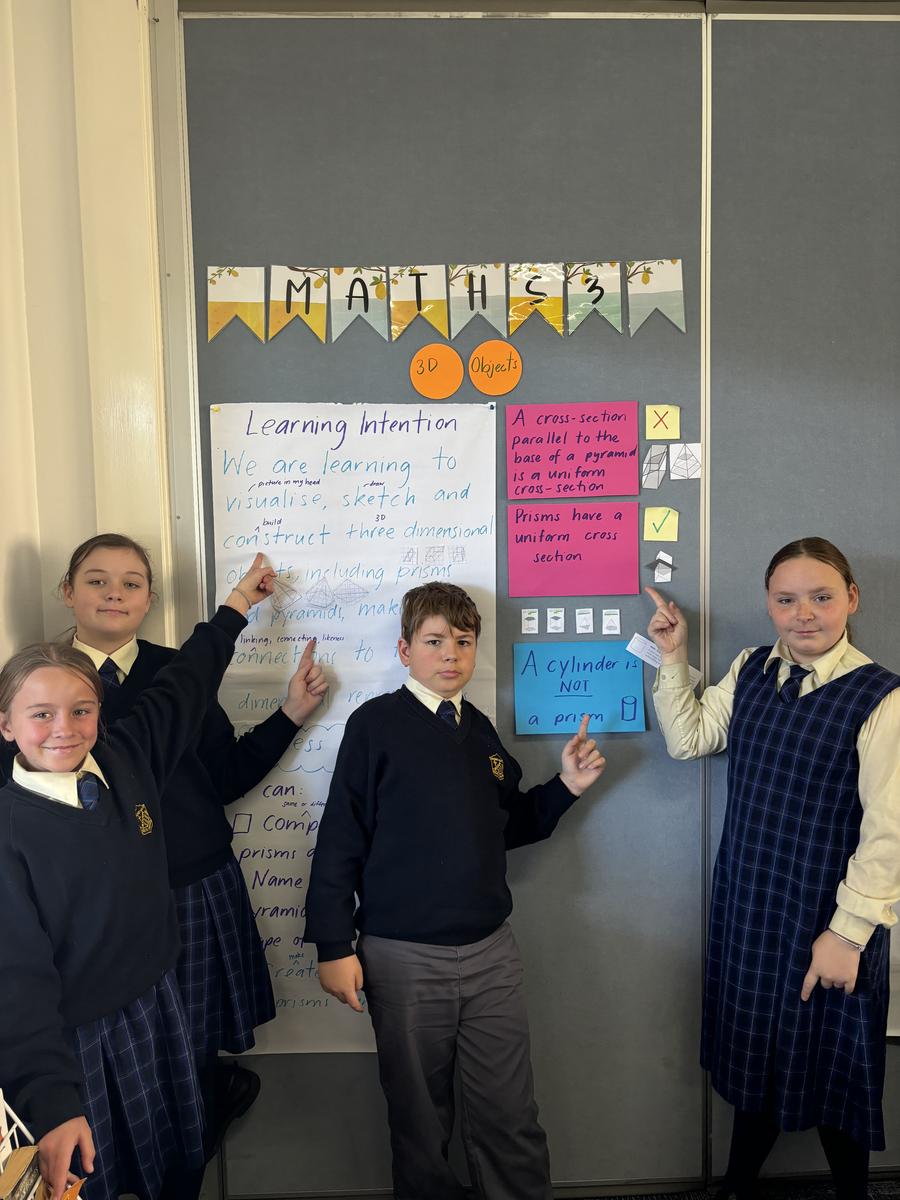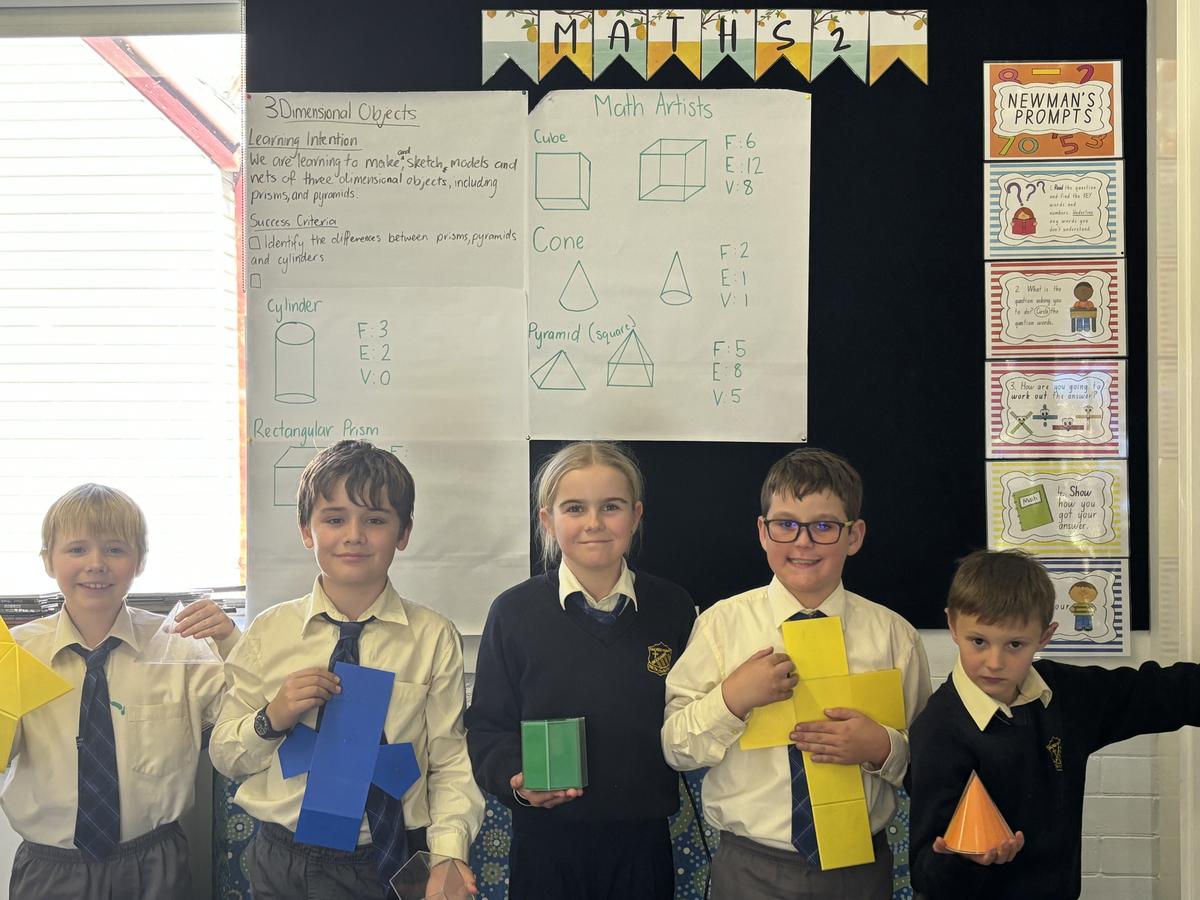Spotlight on the Classroom

SPOTLIGHT ON 3-6
Stage 3 Three-Dimensional Spatial Structure
Why is it important?
Students are surrounded by three-dimensional objects in their daily lives. Geometry helps us decide what materials to use and what designs to make and also plays a vital role in the construction process itself.
TIPS FOR PARENTS:
- In our world, we are surrounded by three-dimensional objects. At school, your child has been learning about prisms and pyramids. Ask them to explain the difference between these two categories of three-dimensional objects. They should also be able to explain the different types of prisms and pyramids and how they are named.
- If you are assembling items like furniture, ask your child to help you with the assembly. If instructions come with the assembly, show them the instructions and the diagrams that assist with constructing the item into a fully-formed object.
- Students have been gaining an understanding of nets, ie. what a 3D object would look like if some of its sides were unattached and lay flat. Encourage your child to pull apart any containers that may be in your recycling to help them understand the net of that object.
- Create fun and relatively easy origami by searching website ideas to transform 2D shape into a 3D object.
- Show your child architectural plans of your house or other structures
- Discuss the different shapes that make up your house, or other homes in your street.
Stage 2 - Three-Dimensional Spatial Structure
Why is it important?
Give it a reason: The real-life application of drawing different views and interpreting given drawings to make 3D models is primarily found in occupations like architecture, engineering, and design. It helps professionals visualise and communicate complex concepts and designs clearly and understandably.
TIPS FOR PARENTS:
Use Everyday Objects: Encourage your child to explore and identify 3D objects in everyday items like cereal boxes (prisms), cans (cylinders), and pyramid-shaped packaging. Discuss the objects, their features, and their nets.
Hands-On Building:Help your child construct models of prisms (including cubes), pyramids, and cylinders using building blocks, playdough, or online 3D tools. Focus on counting edges, vertices, and faces together.
Create and Deconstruct Nets:Work with your child to flatten boxes to see the nets of prisms. Then, try making your own nets from paper and folding them into 3D objects, discussing how each part connects.


